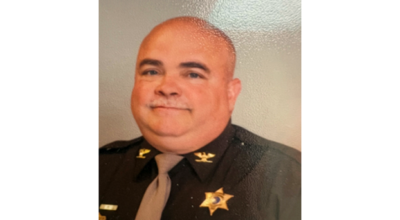County Sheriff urging parents, students follow bus safety tips
Published 10:29 am Wednesday, September 6, 2017
With schools starting across Michigan, Cass County Sheriff Richard J. Behnke wants residents to know the laws for school buses.
Passing a school bus that is loading or unloading students is prohibited under any circumstances. The law requires motorists to come to a complete stop at least 20 feet from a school bus whenever a bus is stopped and employing the use of its two red flashing signals. The driver may proceed once the bus resumes motion.
Tips for motorists
• Drivers should slow down and prepare to stop whenever they see yellow school bus lights flashing.
• The law now requires motorists to come to a complete stop at least 20 feet from a school bus whenever a bus is stopped and employing the use of its two red flashing signals. The driver may proceed once the bus resumes motion.
• Never pass a school bus when children are loading or unloading.
• Remember that children are unpredictable in their actions. Take extreme caution when traveling in a school zone.
• Those who live in an area where there are no sidewalks, drive cautiously. Be more alert to the possibility of children walking in the road.
• Be more aware of children playing near school bus stops.
• Take extra time to look for kids at intersections, on medians and on curbs.
• Enter and exit driveways and alleys slowly and carefully.
• Drivers should reduce distractions inside their vehicles so they can concentrate on the road and their surroundings.
• Put down the phone — do not talk or text while driving
Tips for students
• Always arrive at the bus stop early.
• Prior to boarding, wait until the bus has some to a complete stop, the door is opened and the bus driver says that it’s OK to board.
• Once on board, students should proceed quickly to their seat and stay sitting until the bus arrives at school or other drop off location.
• Do not move around on the bus.
• Always walk on the sidewalk when preparing to cross the street near a bus. Students should make eye contact with the driver so that they are sure he or she sees you.
• Never walk behind the bus.
• If walking beside the bus, students should make sure they are at least 10 feet (10 “giant” steps) away.
• Take extra precaution to make sure that clothing with drawstrings and book bags do not get caught in the hand rail or door.
• Students should never stop to pick something up they have dropped while the bus is stopped. Wait until the bus has driven off to avoid not being seen by the driver.
Traveling to and from school
• Plan a walking route to school or the bus stop. Choose the most direct way with the fewest street crossings and, if possible, with intersections that have crossing guards.
• Parents should walk the route with their child beforehand. Tell him or her to stay away from parks, vacant lots, fields and other places where there are not many people around.
• Parents should teach their child never to talk to strangers, accept rides from strangers or accept gifts from strangers. Remember, a stranger is anyone parents or their children do not know well or do not trust.
• Parents should make sure their child walks to and from school or the bus stop with a sibling, friend or neighbor.
• Teach children — whether walking, biking or riding the bus to school — to obey all traffic signals, signs and traffic officers. Remind them to be extra careful in bad weather.
• When driving kids, deliver and pick them up as close to the school as possible. Do not leave until they are in the schoolyard or building.
• If a child bikes to school, parents should make sure he or she wears a helmet that meets safety standards. Research indicates that a helmet can reduce the risk of head injury by up to 85 percent.
• If a child rides a scooter to school, parents should make sure he or she wears sturdy shoes, a helmet, kneepads and elbow pads. Children under 12 should not ride motorized scooters.
• Be sure children knows their home (or parents’ cellular) phone number(s) and address. They should also know where their parents work, their work phone number, the phone number of another trusted adult and how to call 911 for emergencies.





